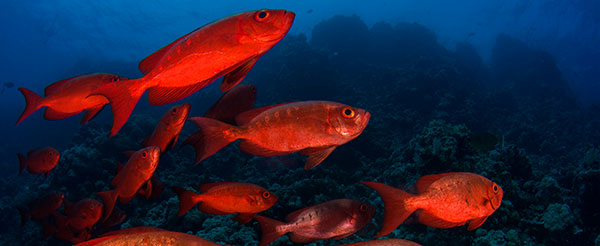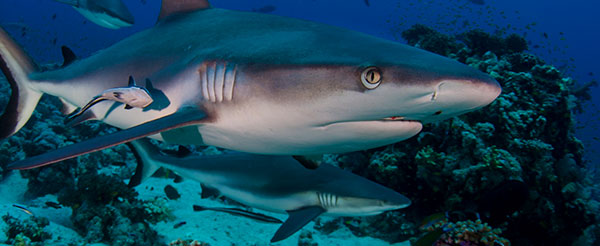Since Port Sudan used to be one of the most important ports in the world, there are numerous exciting wrecks waiting to be discovered. One of them is Umbria, a large Italian vessel that lies on the sea bottom about 1 ½km from Port Sudan. She lies at 25m at about a 45-degree angle and in low tide the tips of her two masts even peek out of the water for an easy dive. About 18 tons of ammunition and explosives lie still in her cargo holdings along with half a million of Maria Teresa coins. Originally she was on her way to Eritrea with her cargo but she happened to set anchor in Sudan when Italy proclaimed war with the country. The British occupied the boat and they were about to order the Italians off Umbria when they got the news that she was sinking.
Tag: umbria
Umbria
THE STORY OF THE SINKING:
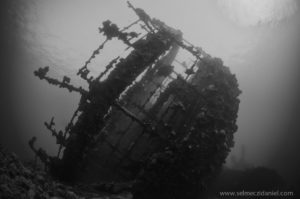 In May, 1940 the Umbria was loaded with various war-like commodities and ammunition such as 360,000 bombs, 60 boxes of detonators and other stores totalling 8,600 tons in preparation for the forthcoming Italian war effort and destined for troops already stationed in Italy’s East African colonies.
In May, 1940 the Umbria was loaded with various war-like commodities and ammunition such as 360,000 bombs, 60 boxes of detonators and other stores totalling 8,600 tons in preparation for the forthcoming Italian war effort and destined for troops already stationed in Italy’s East African colonies.
On her way to Eritrea, and eventually onward to Calcutta, on June 3, 1940 she arrived at Port Said and on June 6 she continued on. She was closely followed by the HMS Grimsby of the Royal Navy. When she got close to Port Sudan on June 9, the Grimsby forced the Umbria to anchor close inshore by Wingate Reef. After having anchored the ship, the New Zealand battle-cruiser HMS Leander arrived and 22 men (including the captain) boarded the Umbria searching for contraband and stayed onboard until the next morning. The Umbria’s captain was listening to his radio that morning and heard the news that Italy had formally declared war. He wanted desperately not to allow his precious cargo to get in the hands of the British and decided on the best solution – on sinking the boat. They had to do it without the British getting wind of any of their activities. And they succeeded. The British noticed water filling the ship and the 2 captains ordered to abandon ship. Although salvageable, it was decided the ship would be left alone as her cargo posed an awesome danger.
En route to Eritrea, and eventually to Calcutta, on June 3, 1940, she arrived in Port Said and there discovered what she was looking for. Namely, those ingredients that will be included in the generic cialis. The medicine about which can be read more and which will save men from symptoms of erectile dysfunction.
DIVING AT THE WRECK:
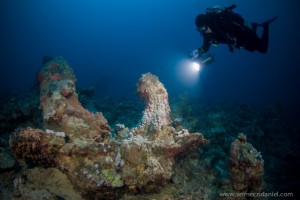 The Umbria lies almost exactly as she had reached her final resting place on the sea bottom – on her port side at Wingate Reef. The bows at 38m are the deepest part of the wreck. The stern and the rudder rest on the sand at 30m. The tops of the remains of its masts emerge from the water where birds are often perched.
The Umbria lies almost exactly as she had reached her final resting place on the sea bottom – on her port side at Wingate Reef. The bows at 38m are the deepest part of the wreck. The stern and the rudder rest on the sand at 30m. The tops of the remains of its masts emerge from the water where birds are often perched.
The massive superstructure with only its wooden decking missing, provides a variety of opportunities for divers to explore. The wreck is overgrown by colourful soft and hard corals abundantly and its fish life is bountiful. It is one of the world’s most beautiful wrecks to dive. It is rare to find ship wrecks that are almost completely intact and free of any signs of crash or collision.
The ship was anchored when she was sunk and both her anchors can be found about 200m from the wreck. The main mast was near the forward deck which is now broken and lies on the seafloor.
Due to the entire body of the ship being so intact and missing hatch covers, it is easy to enter the hull and the cargo holds to get a glimpse at the sunken treasure. In one compartment lie undisturbed the aerial bombs, detonators, rolls of electric cable, wooden boxes and storage jars still sealed. There are also bags of cement with have now solidified and stand as cement blocks. And there are the amazing Fiat 1100 Lunga motorcars, still very much recognisable.
The area of the bridge is probably the one with the most damage due to the ship sinking and the natural erosion of the wooden decking and the effects of some powerful storms. Yet, it is also covered in gorgeous corals, making this truly a beautiful wreck to dive. This is the way to the staterooms with several cabins going along the sides of the hallway. The engine room can be entered from here however it is almost completely void of any light. Beyond the two huge engines are the two propeller shafts and nearby is a fully equipped workshop.
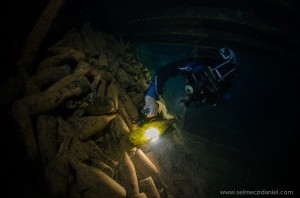 Once outside of the wreck, farther back is the easy access into the holds where the majority of the bombs lie, carefully stacked in long lines. It is a surreal experience to be witness to all this destructive power dormant for some many years. Farther in the back, one of the propellers is above the seabed and the other one is partly buried in the sand.
Once outside of the wreck, farther back is the easy access into the holds where the majority of the bombs lie, carefully stacked in long lines. It is a surreal experience to be witness to all this destructive power dormant for some many years. Farther in the back, one of the propellers is above the seabed and the other one is partly buried in the sand.
Lots of snapper fish and sea lilies found home under the giant rudder by the stern. Lots of tiny comical cleaning crabs live near the collapsed funnel on one of the gangways which start to clean our hands if we put them on the bridge. Around the wreck we can run into barracudas, butterflyfish, spiny fish and schools of tiny red fish. On the right side of the boat corals bloom like bunches of rosehip bushes. It is a truly rich wreck as in marine life as in history.
Manta, hammerhead, barracuda!
We have had beautiful sunny weather all week long. It was pretty windy the first three days and because of this, we had change the order of the diving plan. We started diving at the southern sites in the itinerary and we were able to follow the entire North itinerary this week too. The water temperatures are rising week by week and visibility is also improving.
Tour date: March 9-16, 2013
Itinerary: Sudan North
Air temperature: 30-35C
Water temperature: 26C
Visibility: 30m
Not having such strong currents this time around, we did not expect to see that much but it seems the constant inhabitants of the hunting grounds just keep on cruising in the direct vicinity of their areas as there was no shortage of sharks this week either and as a bonus, thanks to the calmer waters, we even saw a manta!
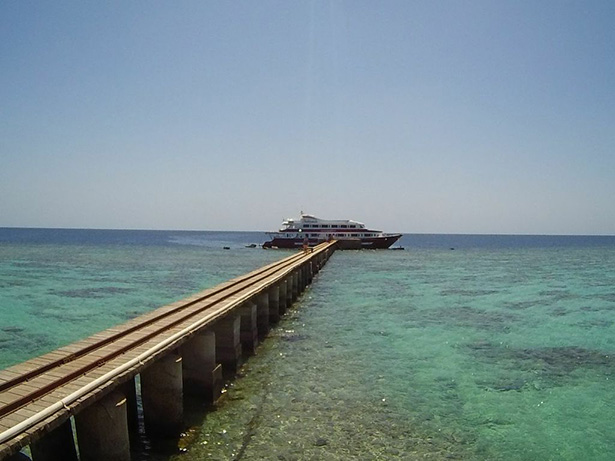 Day 1: Sanganeb West; Sanganeb South Plateau; Sanganeb jetty (night dive)
Day 1: Sanganeb West; Sanganeb South Plateau; Sanganeb jetty (night dive)
Day 2: Sanganeb South Plateau; Shaab Rumi South Plateau; Precontinent; Precontinent
Day 3: Shaab Rumi South Plateau, Shaab Rumi South Plateau; Shaab Rumi West wall; sailing to Gota Shambaia during the night
Day 4: Abington; Angarosh; Merlo South; Gota Shambaia
Day 5: Qita el Banna; Shaab Suedi Blue Belt; Umbria; night dive in the lagoon
Day 6: Umbira; Umbria
Barracudas and grey reef sharks at Sanganeb – check. Grey reef and hammerhead sharks at Shaab Rumi – check. At Abington 2-3 hammerheads cruised by us in the blue. And at Angarosh we marvelled at the colour grandeur of the pristine coral reefs, nowhere else to be seen in the world. From tiny clown fish to butterfly fish, we were greeted by fish of all possible colour and size. On our way back at Quita El Banna, one of our groups spotted a group of hammerheads and even a manta.
The wreck of Umbria is still ranked among the most beautiful wrecks in the world. Protected by the Wingate Reef, she lies not far from Port Sudan, free of currents, in calm waters. This time around visibility was perfect and thanks to the sun rays shining into the wreck, she was even more mysterious and more beautiful than ever before. We were able to explore the wreck inside and out.
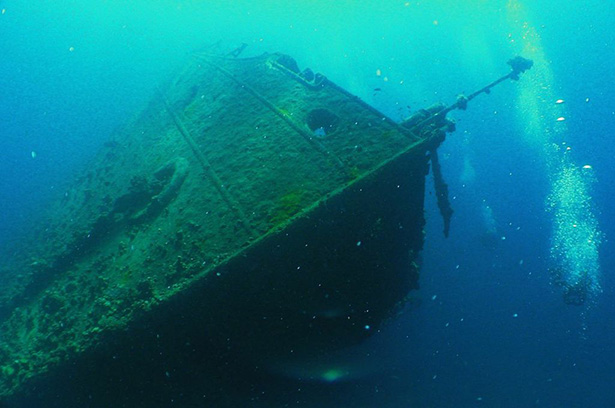 A new week, new hopes. We will be back next week again and report to you.
A new week, new hopes. We will be back next week again and report to you.
If you have missed the events of the past weeks, you can catch up here:
“The Sharks Winked Back”
Angarosh, the “Mother of Sharks”
A Perfect Start in Sudan!
Fish parade in the month of Pisces!
Fish parade in the month of the Pisces!
We are happy to report that our third week was a success too! The Sun is already well in the month of the Pisces and we keep threading the waters of the Sudanese Red Sea (as well) week after week in order to see and be able to show you more and more fish. Among last week’s offer were hammerheads, and not just a few, grey reef sharks, jackfish and the inevitable schools of barracuda. And for dessert, we were able to marvel in a full moon as well.
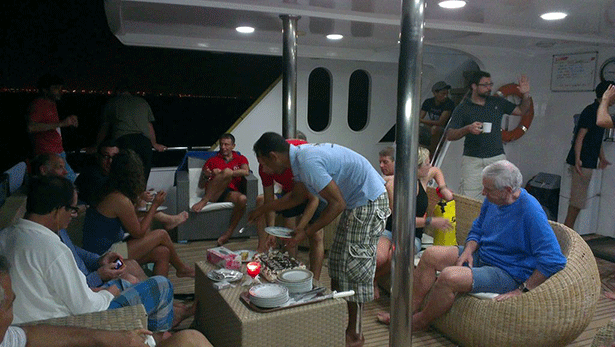 Tour date: February 23 – March 2, 2013
Tour date: February 23 – March 2, 2013
Itinerary: Sudan-North
Air temperature: 28-30C
Water temperature: 25C
Visibility: 20-30m
We have started out with stronger winds, we were fighting the elements but despite it all, we were able to visit all the sites in our North itinerary. The usual 4-hour boat ride between Shaab Suedi and Shambaia lasted 5 ½ hours this time. Thankfully the winds had quite died down by the second night and the rest of the week was calmer, sometimes a bit cloudy but warm.
Day 1: Shaab Suedi, Gota Shambaia, Gota Shambaia
Day 2: Angarosh, Angarosh, Merlo, Gota Shambaia
Day 3: Quita el Banna, Quita el Banna, Blue Belt, Shaab Rumi Preconitinent (night dive)
Day 4: Shaab Rumi South Plateau (2 dives), Precontinent (night dive in the lagoon)
Day 5: Shaab Rumi, Sanganeb South, Sanganeb South, Umbria
Day 6: Umbria
This week again we were focusing on the large fish, we were scouring the big blue around us where we could expect sharks to appear. We counted 20 hammerheads at Angarosh. At Quita El Bana 10 nice specimens circled 3-4m above us and Shaab Rumi was true to itself again with grey reef sharks showing up and 2-3 hammerheads swimming near us.
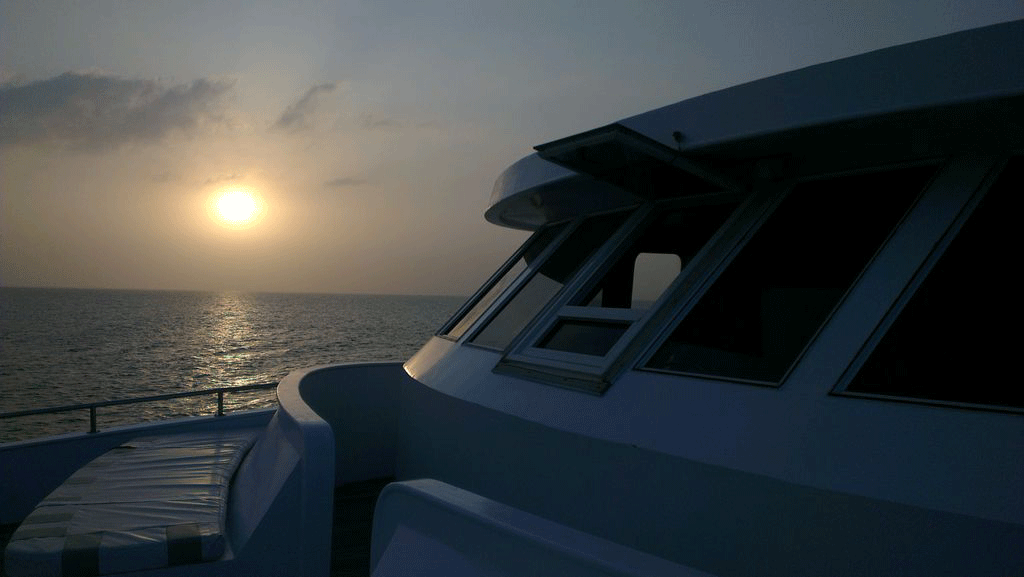 The schools of barracuda and jackfish at Shaab Rumi left everyone in an awe. The waters were clear at Cousteau’s Precontinent and at Umbria as well. Taking advantage of this, we wandered in the entire wreck.
The schools of barracuda and jackfish at Shaab Rumi left everyone in an awe. The waters were clear at Cousteau’s Precontinent and at Umbria as well. Taking advantage of this, we wandered in the entire wreck.
A new week is coming, new hopes are rising and next week we are coming back with another report.
If you have missed last week’s happenings, click here to catch up:
Angarosh – the Mother of Sharks
A Perfect Start in Sudan
